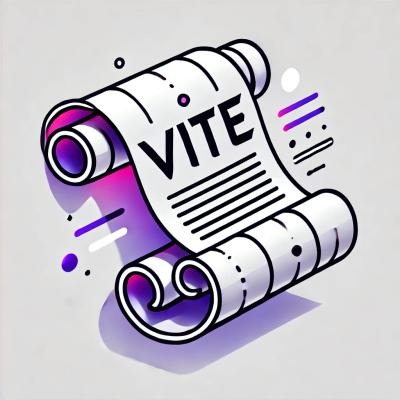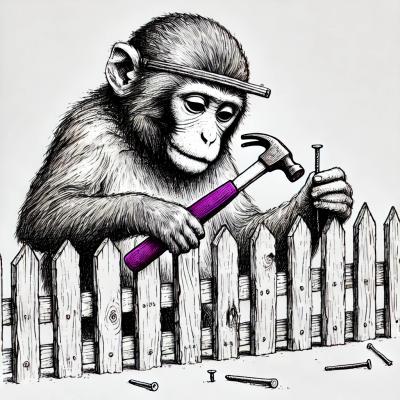
Security News
Vite Releases Technical Preview of Rolldown-Vite, a Rust-Based Bundler
Vite releases Rolldown-Vite, a Rust-based bundler preview offering faster builds and lower memory usage as a drop-in replacement for Vite.
github.com/kristianlyng/skogul
.. image:: https://goreportcard.com/badge/github.com/telenornms/skogul :target: https://goreportcard.com/report/github.com/telenornms/skogul
.. image:: https://godoc.org/github.com/telenornms/skogul?status.svg :target: https://godoc.org/github.com/telenornms/skogul
.. image:: https://cloud.drone.io/api/badges/telenornms/skogul/status.svg :target: https://cloud.drone.io/telenornms/skogul
Skogul is a generic tool for moving metric data around. It can serve as a collector of data, but is primarily designed to be a framework for building bridges between data collectors and storage engines.
This repository contains the Skogul library/package, and cmd/skogul,
which parses a JSON-config to set up Skogul.
The release also includes extensive documentation autogenerated, provided
both as a manual page (man skogul), and RST in docs/skogul.rst once
built.
See also the examples in docs/examples/basics_
.. contents:: Table of contents :depth: 2 :local:
If you're on CentOS/RHEL 7 or newer, you should use our naively built RPM, available at https://github.com/telenornms/skogul/releases/latest.
It will install skogul, set up a systemd service and install a simple
configuration in /etc/skogul/conf.d/default.json.
There's also a 64-bit Linux build there, which should work for most non-RPM-based installations. But we make no attempt to really maintain it.
Building from source is not difficult. First you need Golang. Get it at https://golang.org/dl/ (I think you want go 1.13 or newer).
Building skogul, including cloning::
$ git clone https://github.com/telenornms/skogul (...) $ make $ make install
You don't have to use make - there's very little magic involved for regular
building, but it will ensure -version works, along with building the
auto-generated documentation.
Running make install installs the binary and default configuration, but
does NOT install any systemd unit or similar.
Also see make help for other make targets.
Skogul is written to solve a myriad of issues that typically arise when dealing with metric data and complex systems. It can be used for very simple setups, and expanded to large, multi-datacenter infrastructures with a mixture of new and old systems attached to it.
To accomplish this, you set up chains that define how data is received, how it is treated, where it goes and what happens if something goes wrong.
A Skogul chain is built from one or more independent receivers which receive data and pass it on to a sender. A sender can either transmit data to an external system (including an other Skogul instance), or add some internal routing logic before passing it on to one or more other senders.
.. image:: docs/imgs/basic.png
Unlike most APIs or collectors of metrics, Skogul does NOT have a preference when it comes to storage engine. It is explicitly designed to disconnect the task of how data is collected from how it is stored.
The rationale is that the problem of writing an efficient SNMP collector should not be tightly coupled to where you store the data. And where you store the data should not be tightly coupled with how you receive it, or what you do with it.
This enables an organization to gradually shift from older to newer stacks, as Skogul can both receive data on old and new transport mechanisms, and store it both in new and old systems. That way, older collectors can continue working how they always how worked, but send data to Skogul. During testing/maturing, Skogul can store the data in both legacy system and replacement system. When the legacy system is removed, no change is needed on the side of the collector.
Extra care has been put into making it trivial to write senders and receivers.
See the package documentation over at godoc for development-related documentation: https://godoc.org/github.com/telenornms/skogul
More discussion on architecture can be found in docs/.
Skogul is meant to scale well. Early tests on a laptop proved to work very well:
.. image:: docs/imgs/skogul-rates.png
The above graph is from a very simple test on a laptop (with a quad core i7), using the provided tester to write data to influxdb. It demonstrates that despite well-known weaknesses at the time (specially in the influx-writer), we're able to push roughly 600-800k values/s through Skogul. This has since been exceeded.
This was an early test, and since then Skogul has been run in production on large scale systems, and generally out-performs anything it communicates with.
Skogul is a Valkyrie. After extensive research (5 minutes on Wikipedia with a cross-check on duckduckgo), this name was selected because it is reasonably unique and is also a Valkyrie, like Gondul, a sister-project.
There is little "exotic" about Skogul hacking, so the following sections are aimed mostly at people who are unfamiliar with Go.
A few sources for more documentation:
Testing .......
In short: Use make check. It will run go test -short ./... and
various other checks. There's also make covergui to do coverage
analysis and open it in a browser.
make check is run on every commit.
Use make fmtfix to fix formatting issues, which also makes sure to not
mess with the bundled/generated go files.
Documentation .............
Documentation comes in two forms. One is aimed at end-users. This is
provided mainly by adding proper labels to your data structures (see any
sender or receiver implementation), and through hard-coded text found in
cmd/skogul/main.go. In addition to this, stand-alone examples of setups
are provided in the examples/ directory.
For development, documentation is written and maintained using code
comments and runnable examples, following the godoc approach. Some
architecture comments are kept in docs/, but by and large,
documentation should be consumed from godoc.
See https://godoc.org/github.com/telenornms/skogul for the online
version, or use go doc github.com/telenornms/skogul or similar,
as you would any other go package.
Examples are part of the test suite and thus extracted from *_test.go
where applicable. But aren't really used much.
We are doing frequent releases on github. I honestly don't know why no 1.0 release has been made. Mainly lazyness, we've been "almost there" for 2+ years.
Overall, the core modules and the scaffolding is getting pretty good.
The bigger things moving right now except new modules is logging, which has never been quite right, and dealing with some legacy/deprecation.
Similarly, test cases need to be refreshed. Tests are written very isolated, and a good bit of spaghetti-logic has arisen. We have decent coverage, but it's getting trickier to scale test case writing.
We also need better integration tests now that Skogul integrates with a wide variety of services.
Other than that, there are modules to be written and features to be added which are mostly a matter of what needs arise.
FAQs
Unknown package
Did you know?

Socket for GitHub automatically highlights issues in each pull request and monitors the health of all your open source dependencies. Discover the contents of your packages and block harmful activity before you install or update your dependencies.

Security News
Vite releases Rolldown-Vite, a Rust-based bundler preview offering faster builds and lower memory usage as a drop-in replacement for Vite.

Research
Security News
A malicious npm typosquat uses remote commands to silently delete entire project directories after a single mistyped install.

Research
Security News
Malicious PyPI package semantic-types steals Solana private keys via transitive dependency installs using monkey patching and blockchain exfiltration.